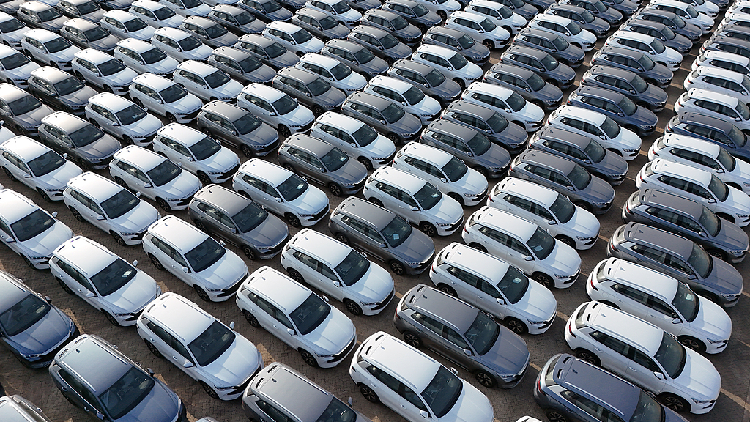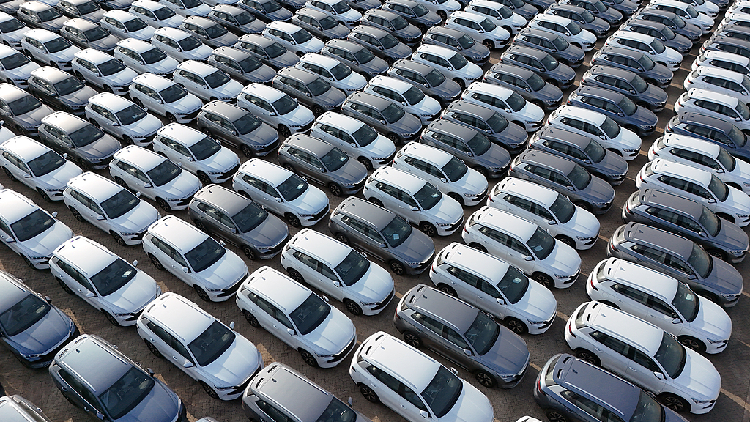European Commission's duties on Chinese EVs are a mistake


Editor’s note: Uri Dadush is a non-resident fellow at Bruegel, based in Washington DC, and a Research Professor at the School of Public Policy at the University of Maryland. The article reflects the author’s opinions and not necessarily the views of CGTN.
The European Commission is set to impose countervailing duties (CVDs) of up to 35.3 percent on electric vehicles (EVs) from China, in addition to the European Union’s 10 percent tariff on imported cars, after EU countries did not oppose the move in a October 4 qualified majority vote.
The duties are a mistake. They will harm EU citizens more than help them, and they will eventually backfire on the European automotive industry.
According to industry sources, Chinese-made EVs, many in joint ventures with EU and U.S. carmakers, now match world quality standards and are much lower priced. Indeed, this is the fear that triggered the policy debate on duties. Moreover, it is understood in the automotive industry that subsidies in China and elsewhere now play a minor role in market outcomes. The price or quality advantage of Chinese EVs appears to reflect China’s vast economies of scale (it produces 60 percent of all EVs), low labor costs, a technology and materials edge in batteries, intense competition among over 100 China-based producers and their early-mover advantages.
<img src='https://news.cgtn.com/news/2024-10-30/European-Commission-s-duties-on-Chinese-EVs-are-a-mistake-1y7lsWvy1Zm/img/df42a63aeb41472aa257015b93c43f28/df42a63aeb41472aa257015b93c43f28.jpeg' alt='Volvo cars awaiting shipment from the Volvo Cars plant in Ghent, Belgium, August 4, 2024. /CFP'
In an animated debate over the CVDs, their biggest cost is the least discussed: persistently high EV prices hurt all consumers and especially those with low incomes. For many less well-off EU citizens, especially in rural areas, a car is the only viable transportation option. Yet, with CVDs, many EU citizens potentially willing to green their vehicles will be unable to do so. Their peers in Japan, Norway and the UK, which have eschewed CVDs so far, will be better placed, as will the middle classes in developing countries such as China, Mexico or Thailand.
The CVDs will also have three negative longer-term repercussions.
First, China will retaliate. It has already challenged the CVDs at the World Trade Organization (WTO), and the EU may lose under compulsory arbitration. I believe that the European Commission’s case for such high duties is weak. The methods used by the Commission to compute the CVDs systematically and considerably overestimate China’s subsidies (grants, land-use rights, preferential financing and battery inputs). This conclusion is consistent with industry views. No one doubts that the Chinese subsidize (and they are not alone), but the impact should not be overstated.
<img src='https://news.cgtn.com/news/2024-10-30/European-Commission-s-duties-on-Chinese-EVs-are-a-mistake-1y7lsWvy1Zm/img/6659bead98004684823c024bd739baeb/6659bead98004684823c024bd739baeb.jpeg' alt='A large number of electric vehicles are to be shipped out of Penglai Port area of Yantai Port, Shandong Province, China, April 18, 2024. /CFP'
Second, the CVDs will insulate the EU’s EV producers from global competitive pressures, reducing the incentive to cut costs and innovate. Once imposed, duties – which legally extend for five years – will be extraordinarily difficult to remove because the industry, including carmakers, their suppliers and their workers, will adjust and become entitled to them.
The duties will discourage European manufacturers from developing integrated value chains with Chinese partners and their highly competitive suppliers. The hold EU carmakers have on the Chinese market will weaken, and more so if China retaliates directly against them, which is a real possibility. Though sheltered at home, EU producers will still have to compete in China, the fast-growing markets of the developing world, and in many others. The prospect that they fall behind the curve is real.
Third, the CVDs represent another step in the fragmenting of world trade and the possible decoupling of the West from China. The economic costs and uncertainties of trade fragmentation are well documented and will not spare the EU. For example, the U.S. market is already closed to Chinese EVs. If Donald Trump is re-elected, he has promised an additional 10 percent tariff on all imports, including those from the EU.
<img src='https://news.cgtn.com/news/2024-10-30/European-Commission-s-duties-on-Chinese-EVs-are-a-mistake-1y7lsWvy1Zm/img/5b6bbf90f83a44d7b314b2669778d67c/5b6bbf90f83a44d7b314b2669778d67c.jpeg' alt='Vehicles are displayed at Chinese electric vehicle manufacturer BYD store in the suburb of Brussel, Belgium, July 5, 2024. /CFP'
Furthermore, it is naive to believe that trade conflicts among great powers will be confined to the economic sphere. A trade war with China will strain alliances within the EU, embolden revanchists at its border, further accelerate the regional arms race and make it harder to contain nuclear proliferation nearby and across the world – trends that are already painfully evident today.
Is there a better course? The answer is yes. The Commission’s attempt to negotiate a price cap with the Chinese – a promise that the price of their EV exports will not fall much below that of those produced domestically – is not the answer. It works against consumers and would deny the EU the duty revenue.
Instead, the aim should be to make Chinese automotive subsidies transparent and less distortive of trade. There should also be an understanding that if imports of Chinese EVs threaten grievous harm to the EU’s industry – which is not the case today – then a safeguard measure will be imposed. To be WTO-consistent: such a duty would be temporary and apply to EV imports from all sources, not only from China. Until October 30, the CVDs remain provisional. It’s not too late for the EU to change its mind.

